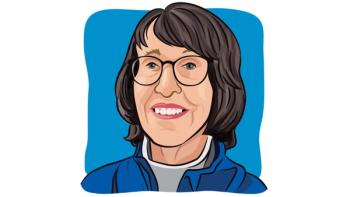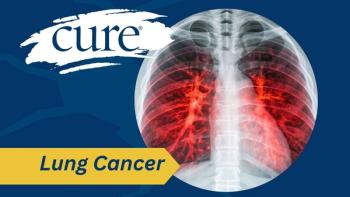
A Healthy Outlook: Mind-Body-Spirit
Transcript:
Shubham Pant, MD: Richard, tell me, you work with a lot of patients, a lot of caregivers. Tell us a little bit about this Mind-Body-Spirit. Where does it come? How do we do these workshops for patients?
Richard Dickens, MS, LCSW-R: Sure, and I would back up a little bit in terms of that Mind-Body-Spirit is a tool, and we’ll call them tools sometimes when you teach people new techniques. But before, you’d almost teach that to them and what Taylor said too is so indicative of almost all patients is that period of being in shock in the beginning. That could go on for weeks or months. And, as a young patient once said, sometimes there’s a healthy dose of denial about the emotional impact. But, at some point, too, in terms of dealing with confronting the emotional impact of cancer for caregivers and patients, is you’d always start out, as a social worker, with helping them identify how have they gotten through other challenges in life. And almost everybody does, even teenagers by that time have had some setbacks or some challenges. People don’t often notice those or remember them, identify them as tools, but they really are - prayer, exercise, music, talking to friends. And then after that, those are innate tools they’ve learned, then you could introduce them to other things like meditation, imagery, visualization. I also do drumming as vibration therapy which is very popular.
Shubham Pant, MD: Like ..... hit the drums like a rock star.
Richard Dickens, MS, LCSW-R: They can but not as a rock star who’s excited, usually as a cancer patient who is really ticked off.
Shubham Pant, MD: Tell me. That’s very interesting. So tell me a little bit about imagery. What is that entail. And the mindfulness, these are kind of words, but what does it mean? What do you train them to do? When you say imagery, how do you talk to patients about that?
Richard Dickens, MS, LCSW-R: Sure, and that’s a great question. They all fall under the rubric of integrative medicine in some areas where basically it is. Basically, there is many different techniques, meditation probably the most popular. Most studied right now in America is mindfulness which uses, some people have called it a 2-point meditation. It uses the breath as a point of focus and then when the mind wanders and you’re not focusing on the breath which the mind is going to do, then a non-judgmental awareness where you observe why did the mind wander, what is the mind thinking. If it’s a pain in the back or something like that, patients oftentimes can either think, oh, my cancer is back or something has gone wrong or they could think the mind-body. They could blame themselves and say I shouldn’t have lifted that box. I shouldn’t have gone for such a long run. So mindfulness kind of just helps people focus on what’s happening at that time. Visualization, I like to break it down into almost three different segments. But one of them is a very practical. When people are in treatment, chemotherapy, radiation, they could build up a profound aversion to just walking into a cancer center, the smells and things.
Shubham Pant, MD: Did that happen to you, Taylor? Did that happen to you when you were walking in for your next scan or something, did that ever happen to you that your heart starts going fast and you’re like, oh my god, your palms are getting sweaty?
Taylor Bell Duck: Yeah. So it wasn’t actually walking in, I always had anxiety a little bit a few days before my scan. But, actually, I honestly felt an overwhelming peace and calmness when I walked in. And so I think every patient kind of handles it differently. Some people, it’s right as they’re sliding into that machine, some it’s days before. But I think I just had to be knowledgeable and understand that I was going to have that worry and the fear. Make sure I communicate with my loved ones that I might be a little bit on edge and this is why. But it took some time to truly understand kind of why I was feeling those feelings and ways to adapt and overcome them.
Shubham Pant, MD: And how do you use, so you were talking about imagery. How do you use that with patients to help them adapt?
Richard Dickens, MS, LCSW-R: Well if I worked with somebody like Taylor I would say, you’re already doing visualization. It’s just calling it a different word, but she was already using that technique, and that’s uncommon among athletes, definitely. But it would be, in that case for that type creative visualization would be really whether it’s 90 seconds or whether it’s a half an hour, you’d be walking the patient through the day and visualizing it the way you want to visualize it. What are you wearing? What’s the day like? It’s not necessarily going to turn out just like that, but you’re going to give them a positive view going into it before they actually go down to the hospital or treatment center or whatever it is that they’re anxious about.
Then there’s other ways of creative visual [stumbled] visualization or other visualization methods of where you take them to a safe place, whether it’s a beach, an ocean, or things like that, a path, and you just bring them to a calm place where they have control and where they could, however people individually deal with their cancer as a battle, a journey, a friend, whatever it is. Because you find ways to use those innate parts of yourself to kind of help you address and open up the healing ways within ourselves, and/or have fun with it and find ways of seeing yourself getting rid of the cancer, throwing it out of your body. So it’s kind of, it would be a little like some really strange fun videogames but not usually that violent.
Shubham Pant, MD: But do you sit down with the patients and do you talk to them and say, okay, you visualize like mind; how long does it take to, in your experience, patients understand mindfulness or they can practice mindfulness. It’s not that easy to turn off your mind and go, okay, I’m just going to breathe, right? I mean there is a certain amount of rigor that goes into it to try to get to the point of meditation or mindfulness or that peace. How long do you think normally, in your experience, when you’re talking to patients and everything, how long do you think it takes them to achieve that state of mindfulness?
Richard Dickens, MS, LCSW-R: A great question and I do a lot of presentations on mindfulness, based again under stress management and that comes up. Am I doing it right, how long will I have to do this till I get it right? And I always say, if you do it once, enjoy the one time. And even people who do it for years and years, Buddhist Monks and such, they still have wandering monkey mind. Nobody ever is perfect at that. So a lot of times, again, the suffering, mental suffering and physical suffering, is we blame ourselves for not getting it right. And I always start out with a three (3) breath exercise for people and then that could be expanded into mindfulness. But if you do it once, enjoy it. If it resonates and you continue to do it, then start, then we can work even closer into, how do you do it right that’s working for you?
Shubham Pant, MD: Anything you think that what Taylor talked about, anything that she’s already used, some of the things that she’s already used to help cancer journey? What would you do if Taylor came to you let’s say when she just got diagnosed, after that, and had surgery and she’s trying to get better, what techniques would you use with a young adult to help them through it?
Richard Dickens, MS, LCSW-R: And I do a lot with young adults definitely, and Taylor is a perfect person to work with because she has all the skills there. First of all, the best breathers in the world are singers, athletes, and people who play wind instruments. And our life, the 20% of our intake of our breath is oxygen. And oxygen is so important. So when I do those three breath exercises, ironically sometimes it’s the lung cancer patients who will come up afterwards and say, “I couldn’t do that,” and as I say to them to bring in some humor, you are doing that or you wouldn’t have gotten here today.” It is, how do we calm the mind and heal the body, and it is the breath. And when we’re in a state of constant crisis, we’re living in that fight and flight syndrome of these shallow breaths. So Taylor already knows how to do that. She’s just got to find ways, and she obviously did, of doing it with less lung capacity. So you’d start where people are, other people who really don’t know anything about it, it would be introducing them a little more. But going back to what you said, I always tell people, when they see me after they are presented they’ll say right away, “I didn’t,” or, “I’m not doing it,” or they’ll apologize. And I say, “Did you do it once?” And they say, “Yes.” Enjoy that.





